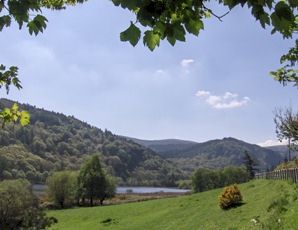- Home ›
- Land & Property records ›
- Landed Estate Court Rentals
Landed
estates court rentals

The Landed Estates Court Rentals may be a collection with a pretty uninspiring title but it can sometimes be of great genealogical value. I say 'sometimes' because they won't further everyone's genealogy research. Some people, however, will find they hold riches.
Originally
available only by personal visit to the National Archives of Ireland in Dublin,
they are now available online at both FindMyPast and Ancestry.
The Landed Estates Court Rentals in brief:

- The Landed Estates Court was also known as the Encumbered Estates Court and the Land Judges Court
- The Landed Estate Court was set up to deal with land whose owners were either insolvent or otherwise without the resources needed to properly manage their estates.
- The Court sold off around 8000 estates.
- The sales took place 1849-1875.
- More than half a million tenants are identified, and many maps are included.

History of the Landed Estates Court Rentals:
The Encumbered Estates Court was established by an Act of Parliament in 1849 to clear up some of the administrative and financial problems caused to large landowners by the Famine of the late 1840s. It had the authority to sell the estates of those landowners who could no longer meet their obligations.
Many estates had been mortgaged and landowners found themselves unable to keep up repayments due to reduced rentals (their tenants having starved to death or emigrated to avoid such a fate) and the consequent impact on the economic viability of the landholding
The only option for many landowners was to sell off all or part of their estates. In some cases the landowners were not given the choice; creditors (aka encumbrancers) could also force a sale.

How the Landed Estates Court worked
Promotional information, not unlike today's pre-auction catalogues, was published and distributed to potential buyers. This information included the names of tenants and the value of their rents.

It was not just agricultural land and property that went under the hammer.
Some landowners also had residences or owned property in towns and villages and these also make frequent appearances in the Landed Estates Court Rentals.
After the sale, the Court Commissioners distributed the proceeds to the creditors. Clear, unencumbranced title was then officially passed to the new owners.
While the intention of the Court had been to allow native Irish and Catholics to buy, most of this new wave of proprietors were speculators. Existing tenants, unless they were buying, had no say in the sale or purchase, and no protection was written into the sale conditions.
Since many of the new landlords were motivated only by profit, many tenants were evicted without any compensation. More than 8,000 estates were sold.
Details found in the Landed Estates Court Rentals
The estates were broken down into lots. The particulars of sale for each lot included the names of tenants, the value of their rents and the terms of their tenancies. In addition, maps of the estates were produced showing the boundaries of lots or, for urban properties, a village plan showing the location of the dwelling. In some instances a full survey of the land was included.
In terms of genealogical detail, the sale particulars can be surprisingly useful. (A couple of examples are in the right hand column.) The leases and tenancies often date back to the 18th century and may be the only surviving written evidence of the lives of many of our ancestors.
In terms of genealogical detail, the sale particulars can be surprisingly useful, as you'll see from a couple of examples below (in the light grey boxes). The leases and tenancies often date back to the 18th century and may be the only surviving written evidence of the lives of many of our ancestors.
The Landed Estates Court Rentals collection is not going to help every Irish family historian... most won't find anything about their ancestors in the collection. Even so, there are more than half a million tenants recorded in it, and every county of the island is included, so this collection definitely deserves consideration in your Irish genealogy research plans.
The landed estates court rentals are available online at FindMyPast and Ancestry , and offline at the National Archives in Dublin.